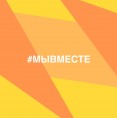- Главная страница
- -Visit us
- -Exhibitions
Matilda Kshesinskaya: Fouettes of Fate
The main building
All exhibitionsMuseum entrance ticket
Interested visitors can look through old albums which compile, in thematic sections (Home, Family, Love), photographs, business documents, letters, excerpts from memoirs and diaries of Matilda Kshesinskaya, people who were close to her, and her contemporaries.
Many museums and archives of St.Petersburg and Moscow have contributed to the project by providing rare photographs and documents. The State Museum of Political History of Russia expresses its gratitude to all organizations and their employees who participated in the preparation of the exhibition.
Audioguides in Russian, English, German and Spanish
Description
The State Museum of Political History of Russia continues its tradition to introduce prominent personalities in the Russian history to visitors. An exhibition "Matilda Kshesinskaya: Fouettes of Fate" is designed to provide a full overview of the personal and creative biography of the famous ballerina of the Silver Age who left a significant footprint in Russian art.
Matilda F. Kshesinskaya is not only a synonym of Russian ballet at the turn of the 20th century, but also was a significant personality in the life of high society and culture of St.Petersburg in the last decades of the Russian Empire.
Today, she is of interest to us as a one-of-a-kind phenomenon encompassing many significant events in the cultural and political history of Russia.
Kshesinskaya was highly proficient in ballet technique. She was the first Russian danseuse to perform the famous 32 fouettes on the Imperial stage. Interest in the ballerina's life could have been confined to a small circle of ballet lovers, if not for the halo of myths and sensations which has always surrounded her.
Her affair with the future Emperor Nicholas II, and love and business relationships with the Grand Dukes Sergei Mikhailovich and Andrei Vladimirovich caused a lot of innuendo, spawning the most fantastic rumors and gossip. There are still controversial opinions not only about the personality of Matilda Kshesinskaya, but also about the sources of her huge wealth — before 1917, Kshesinskaya was one of the richest women in Russia.Matilda Kshesinskaya was born in Ligovo in the suburbs of St.Petersburg on August 18(31), 1872, in the period of reign of the Russian Emperor Alexander II, and died in Paris on December 6, 1971, when Leonid Brezhnev was the General Secretary of the Communist Party in the USSR. The nearly century long life of Kshesinskaya is largely reminiscent of currently popular romance and adventure novels filled with beautiful ladies and noble men, fatal passions and incredible twists of fate.
This is not the first time that the Museum of Political History of Russia pays attention to Matilda Kshesinskaya. What is distinguishing about the new exhibition is that it aims to show her personal and creative life as much as possible freed from myths and secrets, and uses a large number of new archive sources, including those being exhibited for the first time. The exhibition reveals different dimensions of the multi-faceted personality of Matilda Kshesinskaya, showing her as an outstanding ballerina, socialite, mother, wife, lady and businesswoman.
The visitors will see the brightest pages of her life and creative career. The exhibition begins with the story of the Kshesinsky ballet family. Matilda's father Felix Kshesinsky, brother Josef and elder sister Julia were all dancers. The materials of the exhibition speak about studies of Matilda Kshesinskaya in the Imperial Theatre School under famous ballet dancers and teachers Lev Ivanov, Ekaterina Vazem and Christian Johansson. In 1881, during her studies, Matilda first performed at the Bolshoi Theatre in St.Petersburg. The visitors will see an application for admission of Matilda to the St.Petersburg Theatre School made by her father Felix Kshesinsky and her graduation certificate.
During a graduation performance in the Theatre School on March 23, 1890, she met the young successor to the throne, Nikolai Alexandrovich, which had dramatically changed her entire life in the future. One of the central sections of the exhibition is dedicated to the first big love of the ballerina and her relationships with other representatives of the Romanov dynasty — Grand Dukes Sergei Mikhailovich and Andrei Vladimirovich.
A large part of the exhibition is dedicated to the creation of the "home" of Matilda Kshesinskaya, a luxury mansion in Petrograd Side, the arrangement of which received much of her attention. Visitors will see drawings and sketches of the building which has become one of the masterpieces of Art Nouveau by architect Alexander von Hohen, many photographs of the interiors of the mansion from the stocks of the State Museum of Political History of Russia, the Museum of the Academy of Arts, the State Museum of History of St.Petersburg and St.Petersburg Museum of Theatre and Music. "The house is very fancy, the architect fulfilled all my wishes excellently", wrote Matilda Kshesinskaya and continued remembering her wonderful mansion in St.Petersburg until her last days.The hall currently housing the exhibition previously consisted of two rooms: a study of Grand Duke Sergei Mikhailovich and a billiard room. The exhibition space is adjacent to the most significant interiors of Kshesinskaya's mansion which have been restored by efforts of researchers and restorers — the front door lobby with a rotunda and the White Hall which was used for social receptions and professional training of the ballerina.
Another important section of the exhibition is dedicated to ballet works of Matilda Kshesinskaya. Thanks to her proficiency and perfect technique in classical dance, it did not take long for the young debutante to become one of the brightest stars of the Imperial stage. The exhibition features photographs of Kshesinskaya in the most significant ballet performances, including the role of Esmeralda in the same named ballet of Cesare Pugni. This dramatic role made Kshesinskaya very famous and is reckoned among the best in her creative career.
The section also features photographs of Kshesinskaya's partners who, in different years, included prominent dancers, such as Pavel Gerdt, brothers Nikolai and Sergei Legat, Vatslav Nijinsky and Pierre Vladimiroff.
Relationships of Matilda Kshesinskaya with other famous ballerinas who shone on the Russian stage in the late 19th – early 20th centuries developed in different ways. She had an almost lifelong warm friendship with Tamara Karsavina, but her relations with Anna Pavlova were much more complex, with much jealousy and rivalry, and during performances in the Mariinsky Theatre the audience often divided into the "Kshesinists" and "Pavlovians".
The quiet and comfortable life of the ballerina was suddenly interrupted by the 1917 revolution. On February 27, 1917, Matilda Kshesinskaya and her son Vladimir left their cozy mansion to avoid possible reprisals, and soon it was occupied by soldiers of workshops of a reserve armored car division. In the middle of March 1917, the mansion began to house the governing bodies of the Bolshevik Party — the Central and Petersburg Committees of the Russian Social Democratic Labor Party (Bolsheviks) and their Military Organization. Ironically, it was the White Hall of Kshesinskaya's mansion, which recently had accommodated lavish receptions hosted by the ballerina, that was first to hear Lenin's April Theses calling for a socialist revolution, which bewildered even Petrograd Bolsheviks who met their leader. The exhibition materials speak about unsuccessful attempts of Matilda Kshesinskaya to get the Bolshevik organizations evicted from her house and return her property. Realizing that all is lost and "there is no more home, no more chattels", Kshesinskaya left Petrograd on July 13, 1917, and then Russia in February 1920 to never come back.
For the first time, our Museum paid special attention to the emigration period in the life of the famous ballet dancer. After her marriage to Grand Duke Andrei Vladimirovich in January 1921, Kshesinskaya became Princess Krasinskaya in November 1926 and since 1935 has been known as Her Serene Highness Princess Romanovskaya-Krasinskaya.The final section of the exhibition displays a lot of photographs showing Matilda Kshesinskaya during sessions in a ballet studio which she established in Paris 1929, family photos with her husband and son Vladimir Karsinsky, a playbill for a ballet show at the Covent Garden Theatre on July 14, 1936 where she performed for the last time, and drafts for her Memoirs.
The adornment of the exhibition is personal belongings of Matilda Kshesinskaya (a ballet dress, ballet shoes and an honorary award diploma issued by the French Ministry of National Education and Fine Arts to Kshesinskaya as a recipient of the Academic Palms decoration), belongings of her husband, Grand Duke Andrei Vladimirovich (chokha) provided by the State Archives of the Russian Federation, and Kshesinskaya's theatrical dress from the collection of the State Museum of Political History of Russia.Interested visitors can look through old albums which compile, in thematic sections (Home, Family, Love), photographs, business documents, letters, excerpts from memoirs and diaries of Matilda Kshesinskaya, people who were close to her, and her contemporaries.
The exhibition demonstrates a video "Return of Matilda" specially filmed by Nikola Film studio, in which events from the life of the famous mansion are presented by the owner herself.
The exhibition is designed to bring the multi-faceted personality of Matilda Kshesinskaya closer to our contemporaries and show versatile talents of one of the most prominent women in the Russian history and culture in the late 19th – early 20th centuries.Many museums and archives of St.Petersburg and Moscow have contributed to the project by providing rare photographs and documents. The State Museum of Political History of Russia expresses its gratitude to all organizations and their employees who participated in the preparation of the exhibition.
Audioguides in Russian, English, German and Spanish
public in: 25.06.2015 в 16:39
















